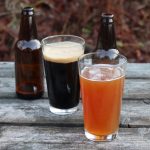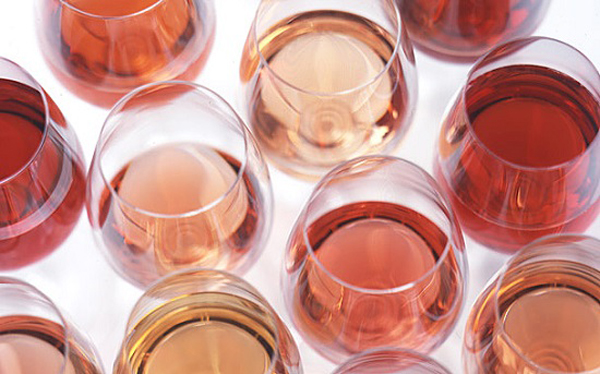Homebrewing is getting more and more popular each day in Australia. Aussies love their homemade beer and enjoy making it. Some of them have grown into big distilleries, and some continue to brew just for their satisfaction. Either way, making your own beer will bring you a lot of joy and a sense of pride that you’ve made something on your own.
Types of Beers to Brew at Home
There are so many opportunities when you’re brewing your own beer at home. Having the perfectly assembled beer brewing recipe kit allows you to try new things each time. More and more brewers love to experiment with the ingredients, the flavourings or the alcohol contents. One specific type of beer that’s recently popular is lager.
You can pull off some amazing flavours and smells with just a few tweaks and a good kit. Another popular type of beer for homebrewers is the versatile ale because it’s one of the oldest and has a short brewing period. Porters have a wonderful roasted smell and are dark in colour. Depending on which malt you choose, you can experiment with tastes to make them fruity and fun or classic dry.
Stouts are excellent with more unique, bitter flavours like coffee. They fall under the dark beer types. Making blond ales for the summer can be a lot of fun. They have a pale shade, are delicious, and could have a trace of bitterness. You can also make brown ales as well. They can have a different colour and taste depending on how you make them and what kind of beer brewing recipe kit you’re using.
You can experiment and add flavourings of your choosing. Many people add caramel, nuts, chocolate or even citrus. On the other hand, pale ales go nicely with spicy dishes and fruity flavours. Pilsners are the best option if you prefer hoppy notes. They are excellent for the hot summer months and have a dry, harsh flavour.
Basic Beer Ingredients
Malt Extract

Did you know that malt extract is made by extracting sugar from malted barley? During this process, manufacturers evaporate most of the water with very sophisticated equipment. This way they get the best of the plant and not ruin it. This process is done in a vacuum machine with low pressure.
Because of the low pressure, the water inside it will boil at temperatures lower than usual. As a final product, you get wort. Once the wort is out, they reduce it to either powder or make it into syrup. There are two types of malt extracts: LME (liquid malt extracts) and DME (dry malt extracts).
The LME has a thick consistency, almost like a syrup, and the second one is dry powder. The main difference between the two is the water content they have. This means they have different sugar levels. If you need to substitute dry for liquid malt or vice versa, do it carefully. Make the right calculations or go to the store and buy some more of what you need.
Hops
Every beer brewing recipe kit requires some hops. Hops are the female flowers of the plant called Humulus lupulus. Beer manufacturers need the alpha acids in the hops. That’s why they always choose the females because they’re the ones that have them. The alpha acids are responsible for the beer’s bitterness levels. More alpha acids means more bitterness and vice versa.
You should know that it’ll take a few hours of boiling to get the bitterness out of these acids because they are difficult to dissolve in water. The amounts of acids in plants fluctuate seasonally and are never the same. This means you may have to experiment and do some tests before going for the big brew.
Grains
Always be on the lookout for fresh grains only. Make sure you carefully choose your suppliers. Find someone reliable because the fresher the grains, the better the beer. When you combine the grains with the malt extract, they can make nice aromas, amazing flavours and lovely colours. Start by grinding the grains.
If you don’t have the tools at home, take them to a local mill. Their scents can disappear if you leave them sitting for a long period of time. However, they can last for roughly four months if you don’t grind them right away. With the right homebrew recipe kits and some fine grains, you can create something new and amazing.
Yeast

People were brewing beer for a long time before they realised they needed yeast. Yeast is crucial for the whole process. As you are aware, yeast is a single-celled fungus that produces alcohol and CO2 by feeding on the sugar in malt. It comes in two forms: liquid and dry. People have shunned dry yeast since its discovery because it didn’t work as well as liquid yeast. However, we now have yeast powders that work flawlessly no matter where you use them.
Water
This may not seem like a very important component of the entire brewing process in the beginning, but since water makes up over 90% of the beer, it’s crucial to use a good one for your brew. It shouldn’t have any smell or taste. It should be clean and have moderate pH levels.
How to Brew at Home?
If you’re a beginner, the brewing method can seem like some scary chemical experiment, but that’s not the case. Brewing is actually very simple to do. There’s a range of kits and recipes to choose from, pale ales, stouts, dark ales, lagers, pilsners, German, and Belgian varieties and many more.
Bringing out all of the equipment and thoroughly cleaning it should be your first priority. This is crucial because nothing outside the kit should come into contact with the beer. Now it’s time to mix the grains and the water. After bringing them to a boil, add the malt extract. This way you get the wort. To continue with the whole process, you have to cool down the wort as fast as possible.
The fermentation process is next. Make sure you also sanitise the rest of the equipment you’ll be using for fermentation. Once you do it, pour the wort into the fermentation vessel. Add water to activate the yeast and don’t stir the vessel during the fermentation period. It usually lasts for two weeks, but it’ll depend on the type of beer you’re making. Once the fermentation is done, bottle the beer, add the caps and store them somewhere dry and cool.




















